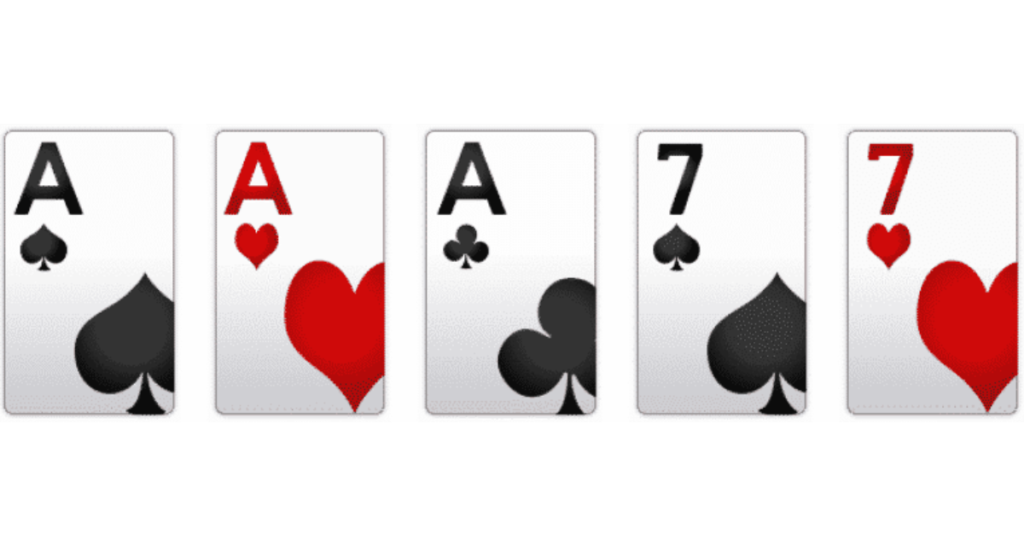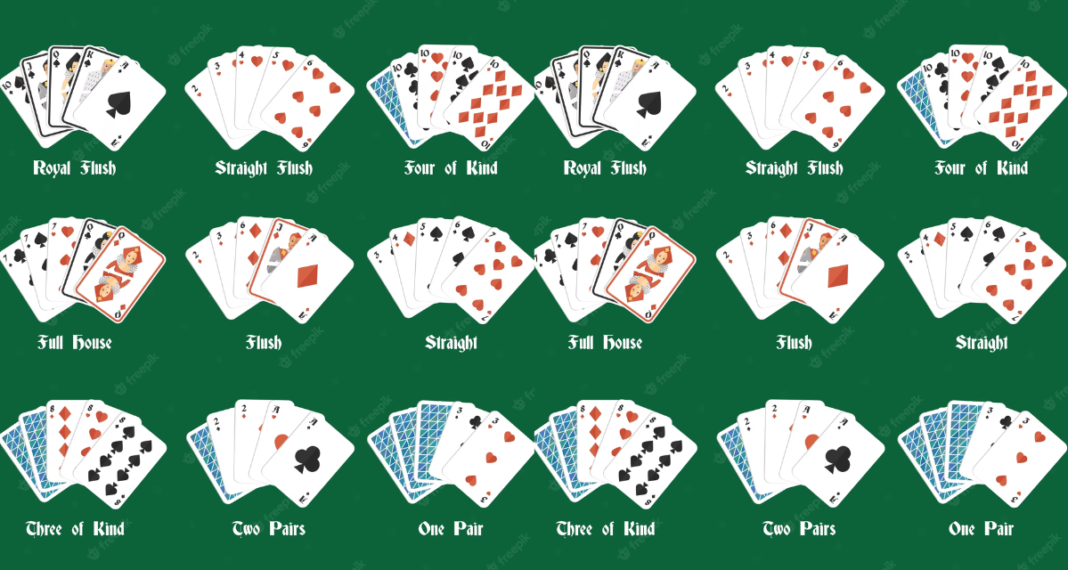If you’re a fan of poker, you’ve likely heard the term “full house” being thrown around. But what exactly is a full house in poker? How does it compare to other hand rankings, and what strategies can you employ to maximize your chances of obtaining this winning combination? In this comprehensive guide, we’ll delve into the intricacies of a full house in poker, exploring its rules, variations, and its significance in the game. Whether you’re a novice player looking to enhance your understanding or an experienced poker aficionado seeking to deepen your knowledge, this article has got you covered.
What is a Full House in Poker?
A full house is a hand ranking in poker that falls just below a flush and above a straight. It consists of three cards of the same rank paired with two cards of another rank. To illustrate, imagine you’re dealt the following hand: King of Spades, King of Hearts, King of Diamonds, 5 of Spades, and 5 of Clubs. This hand would be considered a full house, as you have three Kings and a pair of 5s. The rank of the three-of-a-kind determines the strength of a full house, with higher-ranked three-of-a-kind combinations trumping lower-ranked ones.
Understanding Poker Hand Rankings
Before we delve further into the details of a full house, it’s essential to familiarize ourselves with the basic hand rankings in poker. This knowledge will enable you to better appreciate the value and significance of a full house within the game.
- High Card: The lowest-ranking hand in poker, it consists of five unrelated cards. The highest card in this hand determines its strength.
- One Pair: This hand contains two cards of the same rank and three unrelated cards.
- Two Pair: As the name suggests, this hand consists of two pairs of cards of the same rank, accompanied by an unrelated fifth card.
- Three of a Kind: Also known as a set or trips, this hand contains three cards of the same rank and two unrelated cards.
- Straight: A straight consists of five consecutive cards of any suit. The Ace can be used as both the highest (10, Jack, Queen, King, Ace) and lowest (Ace, 2, 3, 4, 5) card in a straight.
- Flush: This hand contains any five cards of the same suit, not necessarily in consecutive order.
- Full House: A full house comprises three cards of the same rank and a pair of cards of another rank.
- Four of a Kind: Also known as quads, this hand consists of four cards of the same rank and one unrelated card.
- Straight Flush: A straight flush combines the characteristics of both a straight and a flush. It consists of five consecutive cards of the same suit.
- Royal Flush: The highest-ranking hand in poker, a royal flush consists of the Ace, King, Queen, Jack, and Ten of the same suit.

Now that we have a basic understanding of hand rankings, let’s explore some frequently asked questions related to a full house in poker.
Conclusion
In conclusion, a full house is a powerful hand ranking in poker that consists of three cards of the same rank paired with two cards of another rank. Its value lies between a flush and a straight, and it can be beaten by higher-ranking hands such as a four of a kind or a straight flush. Understanding the various hand rankings in poker is crucial for assessing the strength of your hand and making informed decisions during gameplay. By employing effective strategies and honing your poker skills, you can increase your chances of obtaining a full house and emerging victorious at the poker table.
FAQs about Full House in Poker
Q1: Can you provide an example of a full house in poker?
Certainly! Let’s say you have the following hand: 8 of Hearts, 8 of Diamonds, 8 of Spades, Ace of Hearts, and Ace of Clubs. This hand would be considered a full house, as you have three 8s and a pair of Aces.
Q2: How does a full house compare to a flush?
A full house ranks higher than a flush in the poker hand rankings. A flush consists of any five cards of the same suit, while a full house requires a combination of three cards of the same rank and a pair of another rank.
Q3: Is a full house more valuable than a straight?
Yes, a full house is more valuable than a straight in poker. A straight consists of five consecutive cards of any suit, while a full house requires a set of three cards of the same rank and a pair of another rank.
Q4: Can a full house be beaten by any other hand?
Yes, a full house can be beaten by higher-ranking hands such as a four of a kind, a straight flush, or a royal flush.
Q5: Are there any variations of a full house in different poker games?
While the concept of a full house remains consistent across different poker variations, the specific rules and hand rankings may vary. It’s essential to familiarize yourself with the rules of the particular poker variant you’re playing to ensure accurate hand evaluation.
Q6: How can I increase my chances of getting a full house in poker?
While poker is a game of skill and luck, there are strategies you can employ to maximize your chances of obtaining a full house. Some players focus on tight-aggressive play, patiently waiting for strong starting hands that have the potential to develop into a full house. Others utilize position play and bluffing techniques to deceive opponents and create opportunities for a full house. Ultimately, practice, experience, and a good understanding of poker probabilities can significantly enhance your chances of obtaining a full house.


